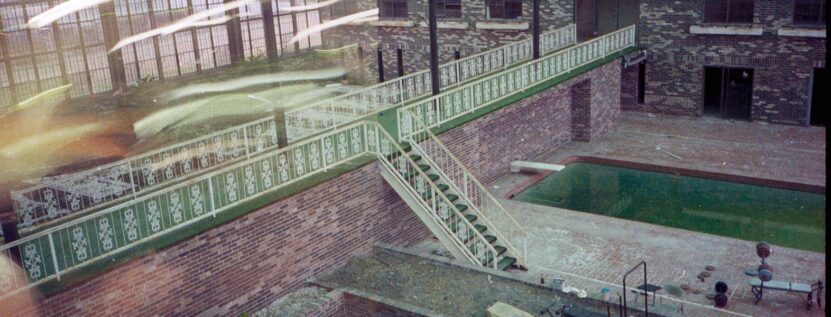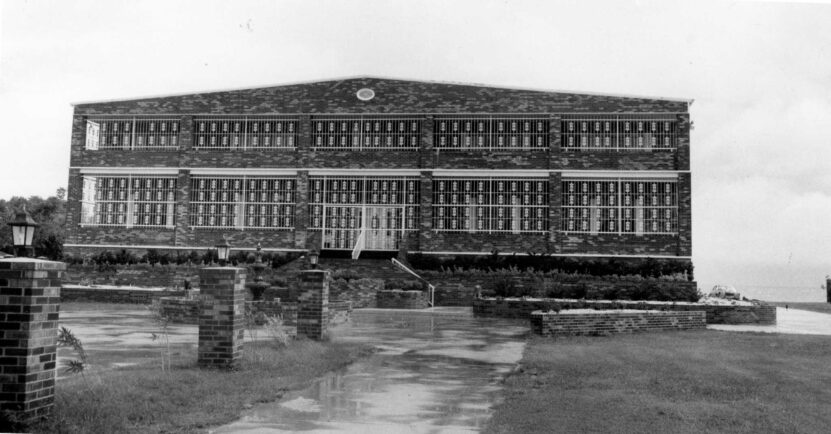Nestled along the picturesque shores of Galveston Bay in Seabrook, Texas, the Todville Mansion once stood as a testament to extravagant dreams and tragic realities. This blog post delves into the captivating story of the Todville Mansion, a structure that evoked strong emotions and left an indelible mark on the local community.
From its controversial architectural design to its tumultuous history, the mansion’s tale is a complex weave of ambition, tragedy, and transformation.
The Architectural Anomaly of Todville Mansion
The Todville Mansion, often described as a “butt-ugly brick house,” was an architectural enigma. Its location along Todville Road, stretching from Seabrook to La Porte, Texas, made it a notable landmark. The mansion’s design deviated from traditional architectural aesthetics, resembling a 1950s factory more than a residential dwelling.
It consisted of two large living areas, each comparable to a modern McMansion, connected by an atrium that housed a pool and garden. This unconventional design choice reflected the unique vision of its owner, Bill List, but also sparked debates about its aesthetic value.
The interior of the mansion further accentuated its distinctiveness. The high-ceiling atrium, topped with green Fiberglas panels, some of which were missing, gave it an air of neglect, possibly exacerbated by the aftermath of Hurricane Alicia.
The waterfront side of the mansion felt more conventional, with features typical of late-1970s suburban homes, such as textured ceilings and light brown wall-to-wall carpeting. However, the overall design lacked coherence, often described as a crass display of wealth rather than a thoughtful architectural creation.

The Interior: A Reflection of New Money
Bill List’s approach to the mansion’s interior design was as unconventional as its exterior. The interiors screamed ‘new money,’ lacking in subtlety and refinement. Certain rooms, especially those facing the waterfront, mirrored the typical suburban house of the late 1970s, complete with chintzy masonry fireplaces. The mansion’s atrium, with its missing panels and high ceilings, hinted at a lack of attention to maintenance, possibly a result of neglect following Hurricane Alicia.
The mansion’s garage housed a racing orange MGB convertible, covered in dust and sporting expired license plates from 1984. This vehicle, untouched and gathering dust, symbolized the mansion’s gradual descent into disrepair. The lack of accessible points to the garage, coupled with the iron barrier, added to the mansion’s mysterious aura.
Despite its grandeur, the Todville Mansion’s interior design choices reflected a lack of architectural harmony, contributing to its reputation as a depressing and tacky structure.
The Tragic Tale of Bill List
Bill List, the owner of the Todville Mansion, was a man who rose to fortune by capitalizing on the oil boom of the 1960s and 70s. He made his wealth by selling or renting trailers for hauling pipeline sections, a lucrative business during that era.
With his newfound wealth, List embarked on building his dream house on a sprawling lot that stretched from Todville Road to Galveston Bay. The mansion was his vision brought to life, a physical manifestation of his success. However, this dream was short-lived.
List’s lack of architectural taste was evident in the mansion’s design, which lacked imagination and foresight. The mansion, while grand in scale, was criticized for its gaudy appearance and lack of aesthetic appeal. It stood as a symbol of List’s wealth but failed to inspire admiration or architectural respect. This lack of vision would eventually contribute to the mansion’s downfall, both literally and figuratively.
A Life Ended in Tragedy
Bill List’s life, much like his mansion, was marked by tragedy. He was known for picking up male runaways and hustlers from Montrose, in Houston, and bringing them back to his mansion. These young men were often in similar circumstances to List’s own humble beginnings, before fortune smiled upon him. However, this practice led to his untimely demise, a grim chapter detailed in the history of the List Mansion. In 1984, List was murdered by one of these individuals with a shotgun as he returned home.
Following List’s death, the mansion remained unoccupied for years. Various caretakers were hired, ranging from stoners and rock and rollers to families, but none stayed for long. The mansion, tainted by the tragedy of List’s murder, became an undesirable property. It stood as a grim reminder of the dark turn List’s life had taken, overshadowing the grandeur and ambition that once defined it.
The Mansion’s Decline and Demise
After Bill List’s tragic death, the Todville Mansion entered a prolonged period of neglect and decay. The property, once a symbol of wealth and ambition, became a derelict structure, its grandeur fading with each passing year. Despite being available for purchase, the mansion found no buyers. Its reputation, marred by the murder and the unconventional design, deterred potential investors. The mansion, once bustling with life, stood empty and forgotten, a shadow of its former self.
Developers eventually acquired the property, but their efforts to revive it were in vain. The mansion continued to deteriorate, its once-lavish interiors succumbing to the ravages of time and neglect. The property became a haven for various caretakers, including rock musicians, individuals seeking solitude, and even families, but none could restore the mansion to its former glory. The Todville Mansion, once a dream realized, had become an eerie, abandoned relic.
The Final Chapter: Fire and Demolition
The final chapter in the Todville Mansion’s story was as dramatic as its history. In the mid-1990s, the mansion caught fire, leading to its eventual demolition. This event marked the end of an era for the Todville Mansion, erasing its physical presence but not its memory. In place of the once-majestic structure, a series of condominiums were built, symbolizing the area’s transformation and the erasure of the mansion’s troubled past.
The neighborhood adjacent to the mansion’s site, previously known as Gay Vista, even changed its name to Bay Vista, possibly to distance itself from the mansion’s notorious history. The demolition of the Todville Mansion was met with relief by many residents of Seabrook, who were eager to move past the dark legacy it represented.
The site, once home to a grandiose dream, now hosts new stories and lives, with the mansion’s saga remaining a poignant reminder of the impermanence of wealth and ambition.
